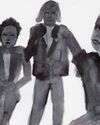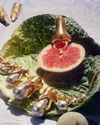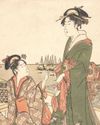
Yohji Yamamoto has devoted his fashion career of over 40 years to perfecting an anti-establishment stance. Ideas such as “anti-trend” and “anti-fashion” are common themes in the Japanese designer’s shows. His defiance can be traced back to his debut presentation in Paris in 1981: At a time when European women wear designers prescribed cuts creating slim illusions or accentuating bodily curves, Yamamoto obscured the woman’s body with dark fabric draped and shaped in a manner that defied the prevailing visual norms in fashion. And everything he has since created has continued in this vein — to stay separate from fashion’s ideals.
He became known as a member of a select group of Japanese designers who made a splash in the West during a Eurocentric time in fashion, such as the late Kenzo Takada, Issey Miyake and Rei Kawakubo. And yet his work was vastly different in its tangible manifestations.
Yamamoto was born in 1943 in Tokyo, Japan. His earliest exposure to fashion was through his mother, who was a dressmaker in the city. He went to Keio University and graduated with a law degree in 1966, but decided he wanted to pursue fashion. This was met with resistance from his mother, who eventually allowed him to help out at her store, where he learnt how to sew from his mother’s assistants. Later, he graduated from Bunka Fashion College (which also counts Kenzo Takada and Junya Watanabe as alumni) and won a scholarship to go on a year-long exchange in Paris. This culminated in Yamamoto presenting his first collection in Tokyo in 1977.
この記事は T Singapore: The New York Times Style Magazine の November 2020 版に掲載されています。
7 日間の Magzter GOLD 無料トライアルを開始して、何千もの厳選されたプレミアム ストーリー、9,000 以上の雑誌や新聞にアクセスしてください。
すでに購読者です ? サインイン
この記事は T Singapore: The New York Times Style Magazine の November 2020 版に掲載されています。
7 日間の Magzter GOLD 無料トライアルを開始して、何千もの厳選されたプレミアム ストーリー、9,000 以上の雑誌や新聞にアクセスしてください。
すでに購読者です? サインイン

Look At Us
As public memorials face a public reckoning, there’s still too little thought paid to how women are represented — as bodies and as selves.

Two New Jewellery Collections Find Their Inspiration In The Human Anatomy
Two new jewellery collections find their inspiration in the human anatomy.

She For She
We speak to three women in Singapore who are trying to improve the lives of women — and all other gender identities — through their work.
Over The Rainbow
How the bright colours and lively prints created by illustrator Donald Robertson brought the latest Weekend Max Mara Flutterflies capsule collection to life.

What Is Love?
The artist Hank Willis Thomas discusses his partnership with the Japanese fashion label Sacai and the idea of fashion in the context of the art world.

The Luxury Hotel For New Mums
Singapore’s first luxury confinement facility, Kai Suites, aims to provide much more than plush beds and 24-hour infant care: It wants to help mothers with their mental and emotional wellbeing as well.

Who Gets To Eat?
As recent food movements have focused on buying local or organic, a deeper and different conversation is happening among America’s food activists: one that demands not just better meals for everyone but a dismantling of the structures that have failed to nourish us all along.

Reimagining The Future Of Fashion
What do women want from their clothes and accessories, and does luxury still have a place in this post-pandemic era? The iconic designer Alber Elbaz thinks he has the answers with his new label, AZ Factory.

A Holiday At Home
Once seen as the less exciting alternative to an exotic destination holiday, the staycation takes on new importance.
All Dressed Up, Nowhere To Go
Chinese supermodel He Sui talks about the unseen pressures of being an international star, being a trailblazer for East Asian models in the fashion world, and why, at the end of the day, she is content with being known as just a regular girl from Wenzhou.